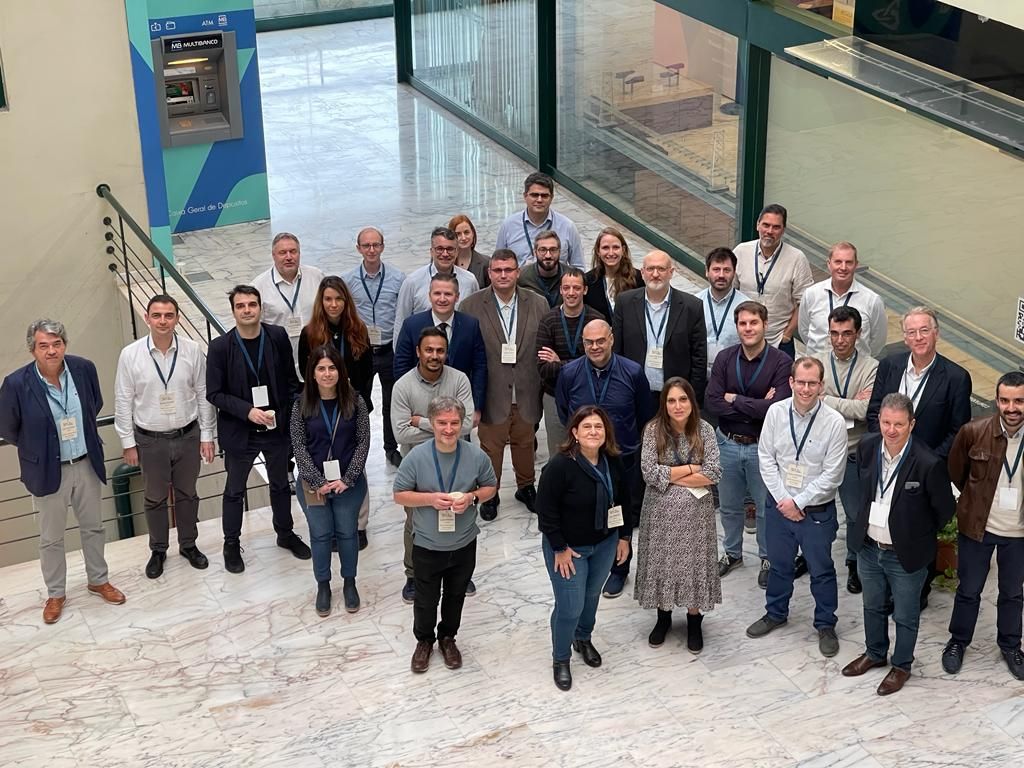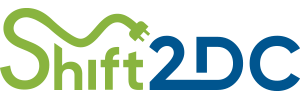
The SHIFT to Direct Current (SHIFT2DC) project hosted its Kick-off Meeting on December 12 and 13 at Instituto Superior Técnico gathering members from the 33 partner Institutions from 13 different European countries, both onsite and remotely. With a substantial funding of over 11 million euros and supported by the European Climate, Infrastructure and Environment Executive Agency (CINEA), the project has the goal of creating smarter, more efficient, and environmentally friendly energy infrastructures through direct current (DC) solutions.
The event gathered over 40 participants from the consortium, with an Opening by the project Coordinator and researcher at INESC ID, Hugo Morais, who will lead the consortium throughout the project’s 42 months.
“We are thrilled to be launching a new project that will carry several challenges but also high expectations. Our main goal is to create a greener and smarter energy landscape for the benefit of communities, industries, and to be used worldwide using effective DC solutions.” , shares Hugo Morais.
The European Climate, Infrastructure, and Environment Executive Agency (CINEA) was represented remotely at the meeting by Project Advisers Antonios Marinopoulos, who was involved throughout the Grant Agreement preparation and presented a general overview of the European Commission and CINEA, of the grant agreement and expected actions from the SHIFT2DC consortium; and Andrea Feltrin who is now taking the role as SHIFT2DC Project Officer.
INESC ID will be responsible for leading the WP2 “DC Solutions Integrations: Tools, methods and applications” focused on developing a tool for the design of DC solutions, specific libraries for DCs, Buildings, Industries, Ports etc., and the WP6 “Knowledge transfer and Dissemination”, responsible for documenting all dissemination and communication activities of the project. Under the WP7, INESC ID will lead the project management and coordination, ensuring financial, administrative, data and risk management while securing the quality of the project outputs.
In the Media: Innovation News Network; Smart Grids Info; Ambiente Magazine; Indústria e Ambiente; RTP Madeira Online; Jornal Económico; Dnotícias; JM Madeira; O Electricista; Água e Ambiente; Green Savers; AICEP Portugal; Madeira Weekly; Expo Clima; EHPA Website; ITI Website.
More about SHIFT to Direct Current (SHIFT2DC)
The SHIFT to Direct Current (SHIFT2DC) project aims to transform the way direct current (DC) solutions are used in our power systems. To do so, the consortia will establish comprehensive guidelines and a roadmap for the widespread application of DC in diverse energy scenarios.
The EU initiative will implement a top-down, application-agnostic approach to design, simulate, test, validate, and apply DC solutions at both medium (MV) and low voltage (LV) levels. To guarantee the promotion of greener energy alternatives, the consortium will conduct thorough analyses, including feasibility, cost-benefit, life cycle, and environmental impact assessments. This will ensure that the proposed DC solutions are not only practical and cost-effective, but also sustainable.
Over the course of the project, three field-test demonstration sites will be implemented: two DC living Labs and one digital twin demonstrator centered on testing solutions for Data Centres, Buildings, Industry and Ports.
It will be crucial to demonstrate the effectiveness and adequacy of these DC solutions to enhance confidence in their use and in the planning and conception of systems based on DC. With this in mind, the SHIFT2DC will develop, integrate, and demonstrate several solutions specifically designed for DC applications including:
– Sustainable and smart DC Cables, developed for DC installations,
– Micro Solar DC Systems
– LVDC measurement device
– Pre-Charging Units for DC circuit breakers
– LVAC-LVDC Interlink converter
– high density power sources,
– Smart PDU High Density V2X DC stations, among others.
Funded through the Horizon Europe Programme, SHIFT2DC is planned for 42 months (December 2023 to June 2027), bringing together a group of 21 beneficiary partners, 6 affiliated entities, and 6 associated partners for a total of 33 partners.
More about the Consortium here.




Comments are closed.